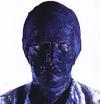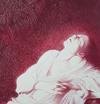Press and Media
Austria Today, Nr. 23/99 – June 8, 1999
Lower Austrian Donaufestival
Prophecies Along the Danube
Apokalypse is also the title of a show which brings one of Austria's most controversial figures back to his home country. Gottfried Helnwein's work will be featured in his first solo exhibit in Austria in the past ten years.
Since its conception in 1988, it has travelled the length and breadth of the land alongside the Danube river. It sets spaces in motion (Räume in Bewegung), returned to the origins of cultural traditions (Zu den Quellen) and flowed in a river of illusions (Im Fluss der Illusionen). At the turn of the century the Lower Austrian Donaufestival went on a cruise through the seven seas, diving into the depths of mythology and surfacing in science fiction.
Dangerous Visions marks the opening of the festival on 11 June. The project at St. Pölten's Festspielhaus combines classical music, electronic sounds and visual arts, fusing for the first time the Art Zoyd avant-garde music group with NÖ Tonkünstler orchestra.
The Donaufestival will pay tribute to the man who supposedly predicted such significant historical events as the French Revolution, the rise of Hitler and the assassination of John F. Kennedy. French astrologer and physician Michel de Nostre-Dame (1508-1566), was widely known for his incredible gift. His book of prophecies, Centuries, a volume of 1000 cryptic stanzas, caused much controversy and was condemned by the papacy in 1781. The reincarnation of Nostradamus will hopefully not antagonise the public when he sets up his laboratory in Krems from 12 to 20 June, observing the stars and dining with visitors.
The Donaufestival's Day of the Prophets (12 June) will also lead into he fantastic realm of graphic artist and illustrator Alfred Kubin, who expressed his future visions in his little-known book Die Andere Seite (The Other Side). The event honours the Austrian artist's apocalyptic creations with an exhibition of some 60 works in Krems' Dominikanerkirche.
Apokalypse is also the title of a show which brings one of Austria's most controversial figures back to his home country. Gottfried Helnwein's work will be featured in his first solo exhibit in Austria in the past ten years.
Born in Vienna in 1948, Helnwein has avoided making common artistic statements since his student years. In 1970 he staged the legendary Die Akademie Brennt (Academy Burning) rebellion at the Academy of Visual Arts, protesting against professors' refusal to allow student representatives a say in entrance examinations. Helnwein and his colleagues were charged with locking up teachers and doing serious damage to property.
In the years which followed, several exhibitions of his radical hyper-realistic work caused quite a stir. At Vienna's Künstlerhaus opponents of his art attached stickers reading Entartete Kunst (degenerate art) to his pictures; Modling's mayor had paintings displayed at the D Gallery confiscated by the police, and a show in Vienna's press headquarters building was closed down after three days because of strong protests and strike threats by the works council.
Helnwein continued to make headlines in the 70s and 80s with his horrifying portraits of Austrian trivial heroes, including soccer star Hans Krankl, entertainer Peter Alexander and Formula 1 champion Niki Lauda. While playwright Wolfgang Bauer hailed those images as "paintings of eternity", a critic from the Neue Zeitung remarked, "Let us hope that eternity will resist such impertinence."
The artist also expressed his concern about society: In 1979 he protested against Austrian forensic psychiatrist Dr. Gross with an open letter and a picture of a dead child lying in a plate of poisoned food. Three years later he joined Rettet die Donau (Save the Danube) campaign against the destruction of the great riverside meadowland woods. Helnwein returns to the river, showing large-format paintings reflecting metamorphosis and apocalypse.


